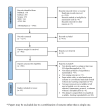Machine Learning in Nursing: A Cross-Disciplinary Review
- PMID: 40755696
- PMCID: PMC12316407
- DOI: 10.7759/cureus.87181
Machine Learning in Nursing: A Cross-Disciplinary Review
Abstract
Rapid advancement of artificial intelligence (AI) and machine learning (ML) is transforming healthcare, and nursing practice is inevitably affected. Yet limited formal education leaves many nurses hesitant to integrate such tools into everyday care. This cross‑disciplinary review (i) introduces the fundamental concepts, core types and common evaluation metrices, illustrated with nursing-specific examples; (ii) catalogues the main algorithmic applications in nursing research; and (iii) describes ethical and practical challenges in their clinical use. A structured search of PubMed, Embase, Scopus, IEEE Xplore and ACM Digital Library (2015-2024) retrieved 1445 records; after de-duplication and screening against inclusion criteria (peer-reviewed, English-language studies that developed, implemented or evaluated an ML method in a clinical, community-health or educational nursing context), 61 papers were analyzed. Supervised approaches predominated, while unsupervised and semi-supervised techniques were less common. Models were evaluated mainly with accuracy, area under the receiver operating characteristic curve (AUROC), precision-recall and F1-score for classification, or mean-absolute/squared error for regression. Applications spanned eight main categories: (1) predictive risk assessment and early‑warning systems; (2) clinical decision support and diagnostic aid; (3) continuous patient monitoring; (4) workflow, staffing and operational optimizations; (5) documentation and information extraction via natural‑language processing; (6) education and competency development; and (7) other niche applications. Key barriers to wider adoption remain regulatory and ethical constraints, data quality, model transparency and engagement issues, data challenges, lack of ML-specific training in nursing curricula, and operational limitations. The utilization of ML in nursing is based on three core pillars: strong interdisciplinary collaboration, systematic integration of ML at all levels of nursing education, and a guiding framework that maps human-centered nursing interventions to interpretable ML tools. Such a foundation will enable nurses to safely leverage the results of algorithms, avoid biases and risks, and integrate ethical responsibility into technology-enhanced care.
Keywords: artificial intelligence; clinical decision support; machine learning; nursing; nursing informatics; predictive analytics.
Copyright © 2025, Kosmidis et al.
Conflict of interest statement
Conflicts of interest: In compliance with the ICMJE uniform disclosure form, all authors declare the following: Payment/services info: All authors have declared that no financial support was received from any organization for the submitted work. Financial relationships: All authors have declared that they have no financial relationships at present or within the previous three years with any organizations that might have an interest in the submitted work. Other relationships: All authors have declared that there are no other relationships or activities that could appear to have influenced the submitted work.
Figures



References
-
- The symbiotic collaboration between family nursing and data science. Pruinelli L, Farag A, Looman W, McKechnie AC, Monsen KA, Van Gelderen S, Dunn-Lopez K. Comput Inform Nurs. 2020;38:375–380. - PubMed
-
- Navigating the global landscape of nursing informatics research collaboration: a blueprint for success. Dowding D, Bjarnadottir RI, Cho H, et al. Stud Health Technol Inform. 2024;315:526–530. - PubMed
-
- Artificial intelligence and robotics in nursing: ethics of caring as a guide to dividing tasks between AI and humans. Stokes F, Palmer A. Nurs Philos. 2020;21:0. - PubMed
-
- The impact of machine learning on patient care: a systematic review. Ben-Israel D, Jacobs WB, Casha S, Lang S, Ryu WH, de Lotbiniere-Bassett M, Cadotte DW. Artif Intell Med. 2020;103:101785. - PubMed
Publication types
LinkOut - more resources
Full Text Sources
